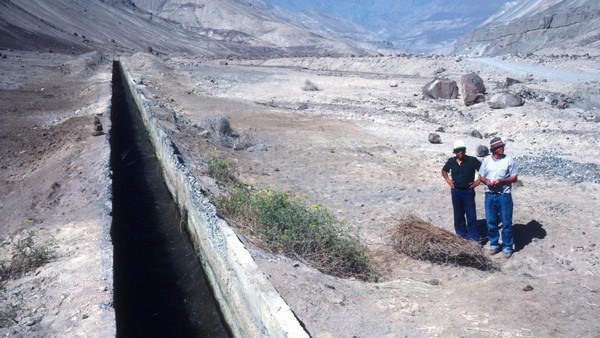Miguel Holle, a plant collector and horticulturalists who was an authority on the wild tomatoes of Peru, died on April 11, 2023, in Lima, Peru. Few people knew the ecology and distribution of wild tomatoes as well as Holle or collected as many local populations. His tomato fieldwork began in 1970 when he joined Charley Rick and others on a collecting expedition in Peru. As Rick recalls in his memoirs, "We had fallen in with the most wonderful person, who was to be our friend, colleague, mentor, and most delightful travel companion, not only for these three months, but for many more trips and visits both in South America and in the US, and prospects for future adventures still continuing. Thus, by affiliating with Miguel, we may have experienced the luckiest break of our entire tomato-chasing experiences!"
That marked the beginning of a long friendship and collaboration between the two scientists to fill gaps in the existing germplasm collections and to understand genetic diversity within them. Holle would help lead several major collecting trips with Rick and colleagues and also organize expeditions of his own. Taken together, his efforts achieved a remarkably comprehensive sampling of wild tomatoes from their native habitats, with an emphasis on Peru, which he knew best, as well as Chile, Ecuador, and Colombia. He also collected more far-flung tomato populations in Bolivia, Brazil, Costa Rica, Honduras, and Panama. In all, Holle and his associates collected over 720 wild tomato accessions. We know that many of these historical populations disappeared from the region due to urbanization and agricultural intensification, making the preserved collections irreplaceable.

In 1978 and 1979 he published a catalog of the wild tomatoes in each of the major watersheds of Peru, with maps showing collection locations, and notes on their ecology, habitat, and other useful information. These catalogs were published as appendices to the Tomato Genetics Coop. The report can be downloaded from the TGC website.
One of his most impactful collections is LA2963, a population of S. pennellii collected in 1988 from the Rio Majes watershed in Arequipa Dept., Peru. This accession has the advantage of being self-compatible and is relatively vigorous and easy to grow. By comparison, our other SC accession of this species, LA0716, is highly inbred and relatively weak. The genome of LA2963 has been sequenced (Schmidt et al. 2017), and a set of backcross inbred lines representing its genome in the background of cultivated tomato has been developed (Torgeman & Zamir 2023). Together these LA2963-derived resources will facilitate breeding and research with S. pennellii in the future.
Researchers who receive seeds from the TGRC are likely unaware of Holle's contributions. His fieldwork helped expand the TGRC's collection of wild tomato relatives, enlarging the gene pool accessible to tomato breeders and helping establish the tomato clade as a powerful experimental system for studies of trait evolution. The tomato community owes a debt of gratitude to Miguel Holle.
Source: tgrc.ucdavis.edu
